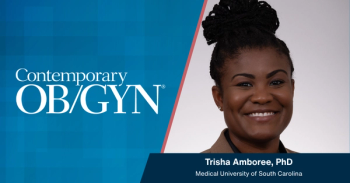
New trends in cervical cancer screening: Self-collection and barriers to adherence
Jeff Andrews, MD, FRCSC, discusses troubling trends in cervical cancer mortality and how self-collection could address key barriers to screening, based on a recent BD survey conducted across 4 countries.
In a recent interview with Contemporary OB/GYN, Dr. Jeff Andrews, MD, FRCSC, vice president of Medical Affairs at BD Life Sciences, discussed current trends in cervical cancer screening and mortality.
Andrews emphasized that while the introduction of the Pap test significantly reduced cervical cancer rates, recent data shows that incidence and mortality have plateaued or are not decreasing as expected, both globally and in the United States. One major factor contributing to this stagnation is the failure of many women to adhere to recommended screening guidelines. A key purpose of a recent survey by BD was to understand the barriers women face in accessing screening and to explore new technologies such as self-collection, which could help reach more women and potentially reduce cancer rates.
The BD cervical cancer awareness survey, conducted by Harris Polls across the United States, United Kingdom, Canada, and Indonesia, revealed that many women are not getting screened according to guidelines. Notably, the survey's findings differed from previous surveys by emphasizing factors such as fear, discomfort, and inconvenience, in addition to lack of knowledge. These concerns were found to be common across all countries surveyed. The survey also suggested that self-collection, a method gaining traction in these countries, could address many of these barriers by offering a more comfortable and convenient option. Although many women were initially unfamiliar with self-collection, their response to the idea was overwhelmingly positive.
Another key finding was that while awareness of the role of human papillomavirus (HPV) in cervical cancer had increased in recent years, ranging from 57% to 66% depending on the country, a significant majority of women still believed the Pap test to be the most accurate screening method. In fact, between 88% and 95% of women were unaware that HPV testing, either alone or combined with cytology, is actually more accurate than the Pap test. Furthermore, a high percentage of women, ranging from 75% to 83% depending on the country, expressed a preference for a less invasive, more comfortable alternative to the traditional Pap test, with many supporting the idea of at-home self-collection.
Andrews noted that while the increased awareness of HPV was encouraging, there is still much work to be done. He was also surprised by the shift in survey findings, which revealed that factors such as fear, discomfort, and cost, rather than lack of knowledge alone, were significant barriers to screening. Despite these challenges, the survey results suggest strong support for more accessible and user-friendly screening options, such as self-collection.
This video is part 1 of a 2-part series. Click
Newsletter
Get the latest clinical updates, case studies, and expert commentary in obstetric and gynecologic care. Sign up now to stay informed.




















